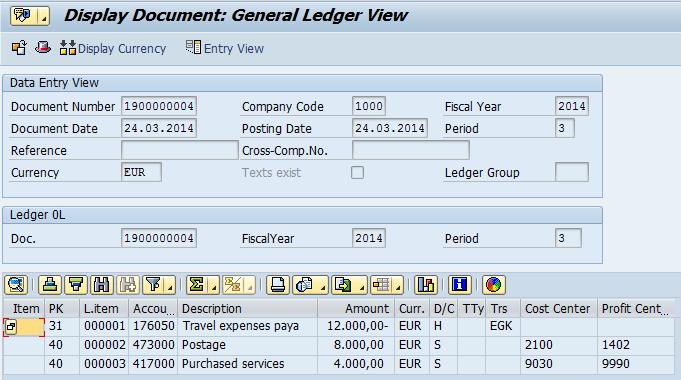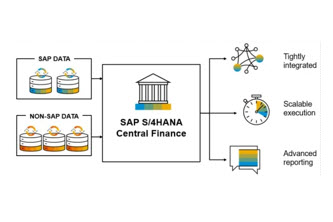5 Steps to a Successful ERP Implementation
by Michael Management

It is time to consider a new ERP system for your organization. And it's your job to make sure it comes off successfully. These tips will help you pull together a seamless implementation. You will learn how to define your scope, include the right people in your process, why ERP training matters and more.
1. Define the Scope
Before you begin any other aspect of your ERP implementation, you need to define the scope. Focus on a few key factors when detailing the scope such as;
- Determine the effected business processes and system requirements
- Make a complete requirements list
- Define your pain points and challenges
- What systems are currently utilized?
- Outline what can be streamlined to help the organization
- Set realistic goals (use SMART goals)
Remember that the more details you can expand on now, the smother the implementation process will be in the future. Getting this information together will also help you narrowly define the new ERP requirements so that selecting a vendor will be easier. You can also include this information in the vendor proposal to be sure you have every need met prior to implementation.
The choices for an Enterprise Resource Planning software package are endless. Every vendor has its own specific set of capabilities. Because you will be prepared with your pain points and business process needs, selecting a vendor will be much easier. More on this in point #4.
Decide on the staff who will help in gathering the information and providing feedback. Be sure to include people from a wide range of business areas because they will be using the new system. Do not keep this project exclusively inside the IT department. Allow selected end users to help guide the selection process.
Don't rush Step #1.
2. Consider Right Out-of-the-Box
Avoid customization. Every additional customization built into this project will make upgrading more difficult.
Research suggests that customization of ERP systems still occurs a high percentage of the time. These statistics may show that some customization is a necessary evil. It is important that you manage these additional upgrades to keep them from leading into long delays and large cost overruns.
Now that you have a list of the business functions and what separate business software needs to integrate with your ERP you can limit the customization by looking for a system designed for your vertical industry.
3. Think About Future Enhancements
During planning, you and your team have put emphasis on what functions are necessary for go-live, and that is god. You also need to think about the next step items that can be implemented down the line after the ERP is up and running. During step #1 you can create a wish list of items that staff has asked for but are not necessary for the system to be live.
Keep this list of items handy so they can be brought online as time and budget allow. This step will help you focus on the long-term success of your ERP program and help you in evaluating your vendor.
4. The Importance of Selecting a Team
As mentioned in step #1, it is important to include employees outside of the IT Department in your ERP development team. Those who have their hands on the system every day and the best to explain the functionality they need; the business processes that can be improved and the pain points in the current system. It is your job to listen to them!
A big bonus to this approach is that user adoption will be easier when everyone feels like they had a voice in the process and the new system was not just pushed on them. Select managers and department leaders in each functional area. Those leaders will be responsible for talking to the front-line employees and will assist in gathering and relaying information.
Most people do not like change, so a great communication strategy will help employees understand why this change is necessary. In addition, by listening to the pain points and fixing the most critical issues, you will be a hero who makes jobs easier. That is an excellent way to begin your ERP project.
Create your teams early and communicate with them offer. Create a precise charter and make sure you are aligned with the corporate decision makers in your vision.
5. Training
Training, training and more training. Be sure to plan for adequate training of your personnel. Because they have been so involved this is going to be an easy step. By now, end users are going to be excited about the new system and ready to get their hands on it. Do not cut corners in your training budget.
A successful ERP implementation requires a strong training program. If the employees don't know how to use the new system, then they won't get the most out of all the new functionality that you worked so hard to implement. This missed step will cause the implementation to feel less successful.
End user training is critical to your successful ERP implementation. Do not cut corners in this area of your ERP budget.
End users who are not well trained will begin to create work arounds that ignore the new functionalities. Also, there will be more errors in entering information which will have impact on important reports. In short, user training is essential.
Everyone has new system implementation horror stories€¦We want to hear a tip from you that helped you to succeed in your ERP implementation. Comment below and add a tip to our recommendations.
by Michael Management
More Blogs by Michael Management

Unlock Financial Precision: The Critical Role of...
Mastering Document Splitting in SAP Central Finance: Essential Ins...

Unlocking Success: The Strategic Imperative of Group...
Why is Group Reporting Critical for SAP Central Finance? Masterin...

Kickstart Your Career: Mastering SAP Inventory...
SAP inventory management is an in-demand skill set from large companie...
Related Blogs

Skills Training Success - 3 Things That Really Matter
We know a thing or two about training. Our experience in deliverin...

Exceptional EPM/CPM Systems are an Exception
Quite naturally, many organizations over-rate the quality of their enterprise...
.png)


